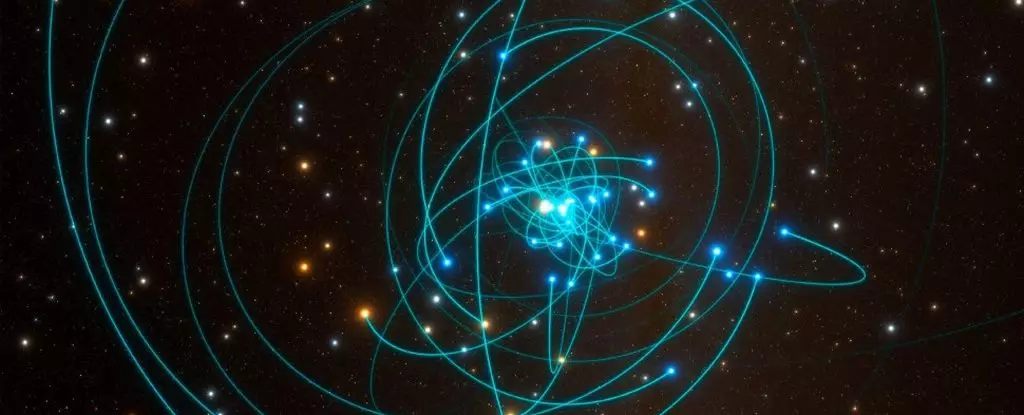The story of Hungarian countess Elizabeth Báthory and her gruesome method of maintaining her youthful appearance through the blood of young girls may be nothing more than a legend. However, the pursuit of eternal youth has persisted through the ages in various forms. While human blood may not hold the key to eternal beauty, recent evidence suggests that the stars in the Milky Way’s galactic center have found a unique way to stay young – cosmic cannibalism.
A Constellation of Zombie Stars
Astrophysicist Sanaea Rose of Northwestern University in Illinois describes the stars in the galactic center as “zombie stars” that win the cosmic collision lottery. Through collisions and mergers, these stars accumulate more hydrogen, giving them a rejuvenated, youthful appearance. These stars, born from an older population, manage to masquerade as young stars despite their true age.
The galactic center is a bustling hub of activity, with a supermassive black hole at its core and a dense population of stars whirling around it at incredible speeds. The environment is ripe for interactions between stars, akin to navigating a crowded subway station during rush hour. These close encounters between stars result in gravitational interactions that can alter their trajectories and characteristics.
Studying the stars in the galactic center directly poses a challenge due to obscuring factors like dense clouds. Researchers, including Rose and her colleagues, turned to simulations to model the interactions between stars in this chaotic region. By setting the stars in motion within the simulated environment, they were able to analyze the outcomes of these collisions and mergers.
The fate of colliding stars in the galactic center appears to be closely tied to their proximity to the supermassive black hole. Within a certain distance, interactions between stars are common but generally result in grazing collisions that leave the stars relatively intact. However, beyond this threshold, slower-moving stars are more likely to collide and merge, creating larger, more massive stars with a youthful appearance.
While these merged stars may appear rejuvenated, there is a trade-off due to their increased mass. Massive stars burn through their hydrogen supply at a faster rate, shortening their lifespan. This phenomenon explains the puzzling absence of old red giant stars in the galactic center, as mass loss from collisions and mergers alters the composition of the stellar population.
Further observational and theoretical research is needed to fully understand the dynamics at play in the galactic center. By studying the interactions between stars and the effects of cosmic cannibalism, researchers hope to shed light on the complex processes shaping this unique cosmic environment. The discoveries made in the galactic center have the potential to deepen our understanding of star formation, evolution, and the interplay between massive celestial bodies.

Leave a Reply